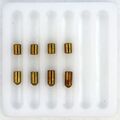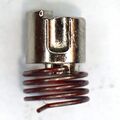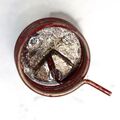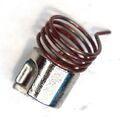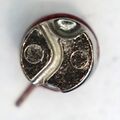Master Lock No 1: Difference between revisions
m (→Master Lock No. 1: specs) |
mNo edit summary |
||
| (2 intermediate revisions by one other user not shown) | |||
| Line 25: | Line 25: | ||
== Principles of operation == | == Principles of operation == | ||
:''See also [[Pin tumbler#Principles of operation|Pin-tumbler (Principles of Operation)]]'' | |||
The No. 1 cylinder is a [[pin-tumbler]] lock with four pin stacks and no [[security pin]]s. The cylinder typically uses the [[M1]] [[Key#Types_of_Keys|key profile]] but may use other profiles, as well. The standard No. 1 can be opened in both directions but the "commercial" series body restricts opening to clockwise rotation. The No. 1 is not a [[key retaining]] padlock. | The No. 1 cylinder is a [[pin-tumbler]] lock with four pin stacks and no [[security pin]]s. The cylinder typically uses the [[M1]] [[Key#Types_of_Keys|key profile]] but may use other profiles, as well. The standard No. 1 can be opened in both directions but the "commercial" series body restricts opening to clockwise rotation. The No. 1 is not a [[key retaining]] padlock. | ||
| Line 54: | Line 56: | ||
File:Master_Lock_commercial_no1_padlock.jpg | File:Master_Lock_commercial_no1_padlock.jpg | ||
File:cutawaym1.JPG|A cutaway No. 1 padlock and cylinder. | File:cutawaym1.JPG|A cutaway No. 1 padlock and cylinder. | ||
File:Master Lock No. 1 insides.jpg|thumb|alt=Master Lock No. 1 insides|Master Lock No. 1 insides | |||
File:Master Lock No. 1 Pins.jpg|thumb|alt=Master Lock No. 1 Pins|Master Lock No. 1 Pins | |||
File:Master Lock No. 1 Actuator (1).jpg|thumb|alt=Master Lock No. 1 Actuator (1)|Master Lock No. 1 Actuator (1) | |||
File:Master Lock No. 1 Actuator (2).jpg|thumb|alt=Master Lock No. 1 Actuator (2)|Master Lock No. 1 Actuator (2) | |||
File:Master Lock No. 1 Actuator (3).jpg|thumb|alt=Master Lock No. 1 Actuator (3)|Master Lock No. 1 Actuator (3) | |||
File:Master Lock No. 1 Actuator (4).jpg|thumb|alt=Master Lock No. 1 Actuator (4)|Master Lock No. 1 Actuator (4) | |||
</gallery></div> | </gallery></div> | ||
Latest revision as of 16:17, 21 August 2025
Master Lock No. 1
| Master Lock No. 1 | |
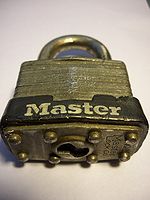 | |
| Name | Master Lock No. 1 |
|---|---|
| Manufacturer | Master Lock |
| Lock Type | Padlock, Cylinder |
| Lock Design | Pin-tumbler |
| Specifications | |
| # of Components | 4 |
| Component Type | Pin-tumbler |
The No. 1 is a pin-tumbler padlock made by Master Lock. The No. 1 uses a laminated padlock body with an internal key-in-knob-style cylinder. The inner cylinder uses four pin stacks and does not use any security pins.
The No. 1 is one of the most common low security padlocks used in the United States.
Principles of operation
The No. 1 cylinder is a pin-tumbler lock with four pin stacks and no security pins. The cylinder typically uses the M1 key profile but may use other profiles, as well. The standard No. 1 can be opened in both directions but the "commercial" series body restricts opening to clockwise rotation. The No. 1 is not a key retaining padlock.
Disassembly instructions
The No. 1 cannot be disassembled non-destructively. To disassemble it the rivets that hold the laminated body together must be removed and each layer removed individually. The inner cylinder itself can be disassembled in the same manner as a traditional pin-tumbler lock:
- Remove the cam or C-clip.
- Insert the key and turn the plug 45-90 degrees.
- Withdraw the plug from the cylinder. (A plug follower is recommended)
OR
- Remove the chamber casings and take out each pin-stack individually
- Remove the cam or C-clip.
- Withdraw the plug from the cylinder.
Notes
- The No. 1 cylinder requires a small diameter plug follower.
- The No. 1 plug is retained by a crimp, rather than a C-clip or cam. Above are the generic pin-tumbler disassembly instructions.
Vulnerabilities
The No. 1 is vulnerable to a wide range of attacks. The reduced pin tumbler count and poor manufacturing tolerances makes it an easy lock to pick. It's commonly given to locksport beginners as a "confidence lock"; a lock that is easy to open and inspires you to continue picking. The No. 1 may be vulnerable to one or more of the following:



